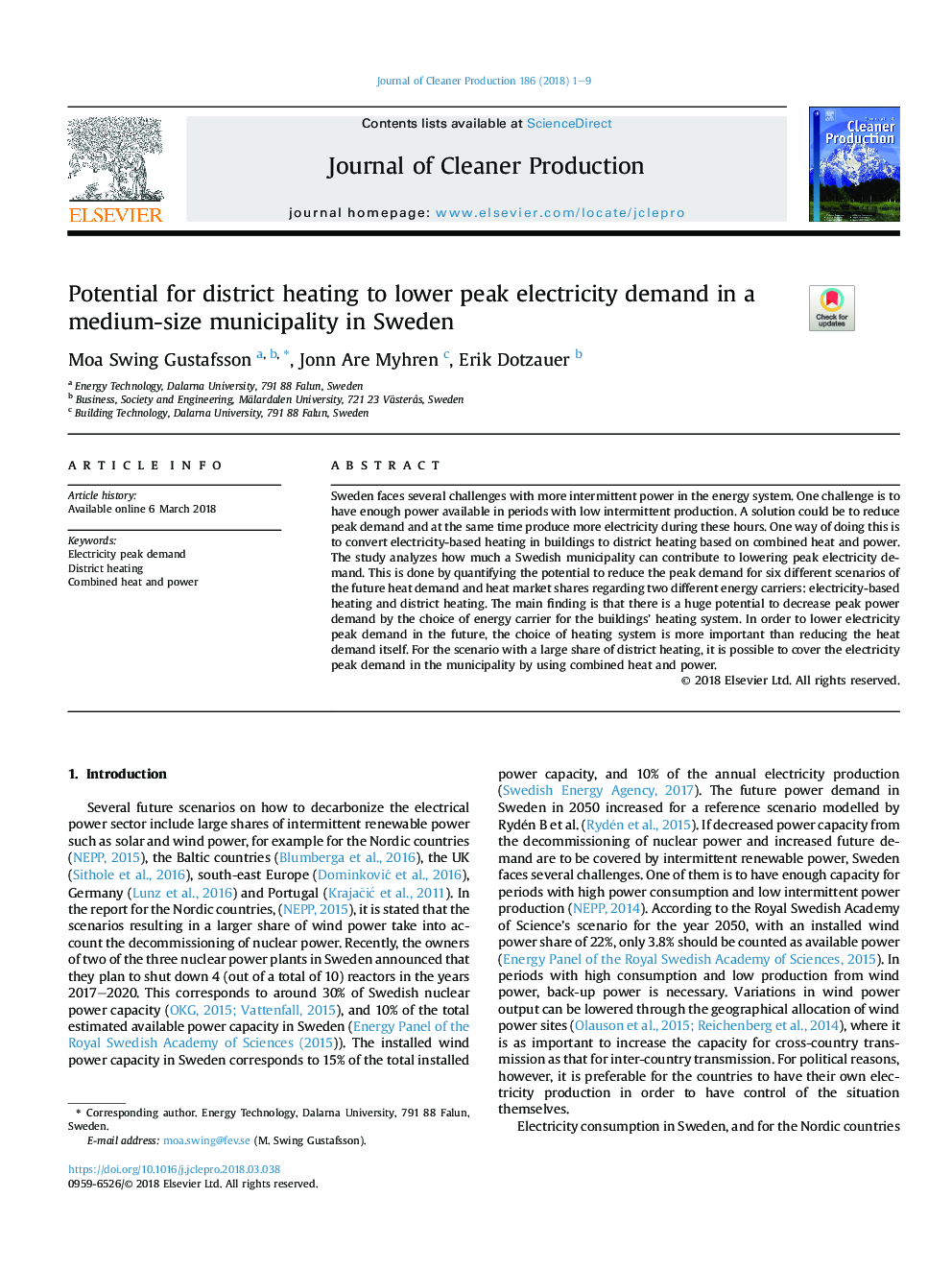| Article ID | Journal | Published Year | Pages | File Type |
|---|---|---|---|---|
| 8096092 | Journal of Cleaner Production | 2018 | 9 Pages |
Abstract
Sweden faces several challenges with more intermittent power in the energy system. One challenge is to have enough power available in periods with low intermittent production. A solution could be to reduce peak demand and at the same time produce more electricity during these hours. One way of doing this is to convert electricity-based heating in buildings to district heating based on combined heat and power. The study analyzes how much a Swedish municipality can contribute to lowering peak electricity demand. This is done by quantifying the potential to reduce the peak demand for six different scenarios of the future heat demand and heat market shares regarding two different energy carriers: electricity-based heating and district heating. The main finding is that there is a huge potential to decrease peak power demand by the choice of energy carrier for the buildings' heating system. In order to lower electricity peak demand in the future, the choice of heating system is more important than reducing the heat demand itself. For the scenario with a large share of district heating, it is possible to cover the electricity peak demand in the municipality by using combined heat and power.
Related Topics
Physical Sciences and Engineering
Energy
Renewable Energy, Sustainability and the Environment
Authors
Moa Swing Gustafsson, Jonn Are Myhren, Erik Dotzauer,
